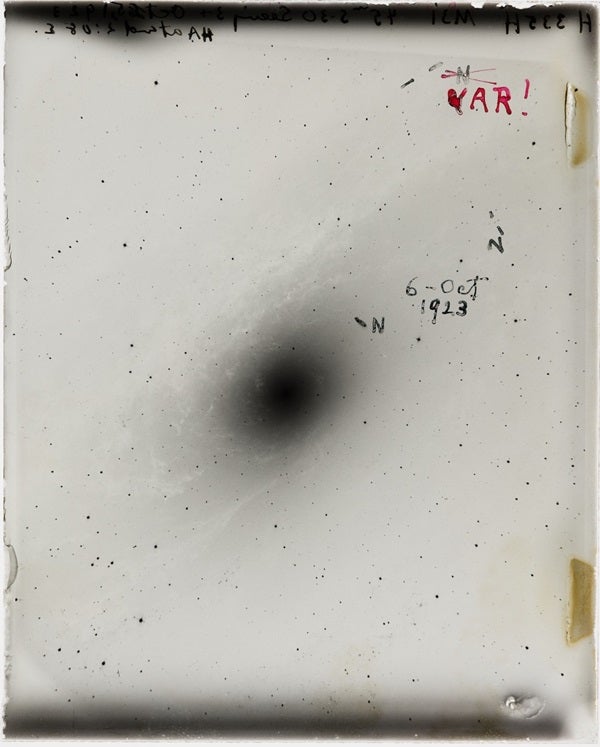100 years ago, in October 1923, Edwin Hubble used this Cepheid variable star, M31-V1 to calculate the distance to M31. We used the photo shot by Bruce Larsen (@ancientphotonfarm) exactly 100 years later, on 6-8 October 2023, to compare to one shot by Brandon Larsen (@darkdesertdome) on 15 October 2020. We hadn't planned it this way, but in comparing our photos realized that M31-V1's luminosity is dramatically different in the two shots. With a bit of research, we found that the measured period of the star is 31.4 days, and that our shots were taken 1087 days apart, which is 34.6 periods different. The image on top from 2023 shows the star to be significantly dimmer than its neighbors, and the image on bottom from 2020 shows it to be about equally bright compared to its neighboring stars. Hence we demonstrated its periodicity, as Hubble did 100 years ago.
Hubble then used Henrietta Swan Leavitt's discovery that these Cepheid variable stars' periodicity is linearly related to their luminosity, and therefore was able to prove that M31 lies far outside the reaches of the Milky Way, forever transforming our understanding of the size of the universe. Below is Hubble's original plate, where he had marked three new stars with "N", then scratched out the "N" and excited wrote "VAR!" next to M31-V1. This was his "Eureka!" moment. We replicated it and felt a tiny fraction of how it must have felt.








Comments